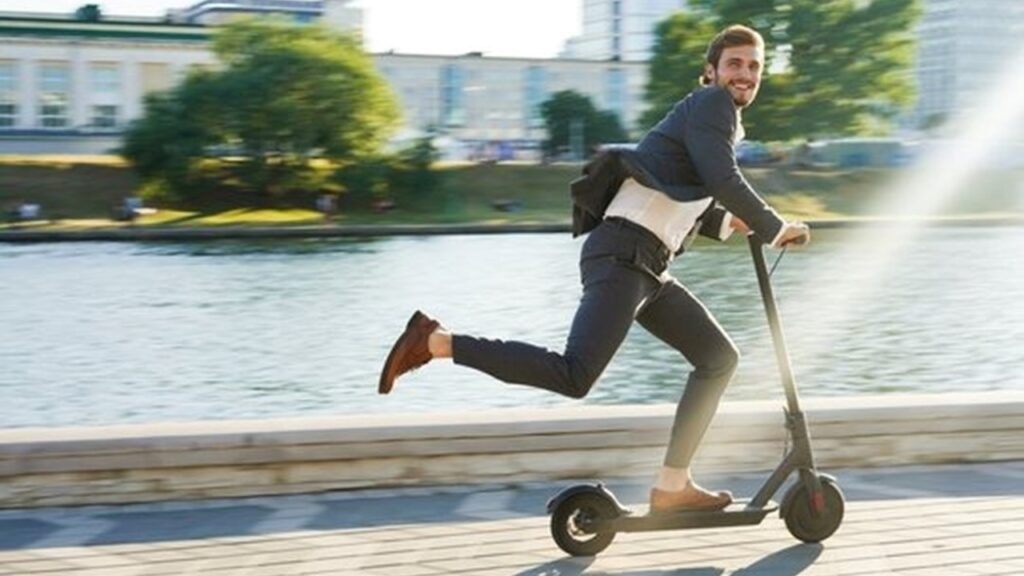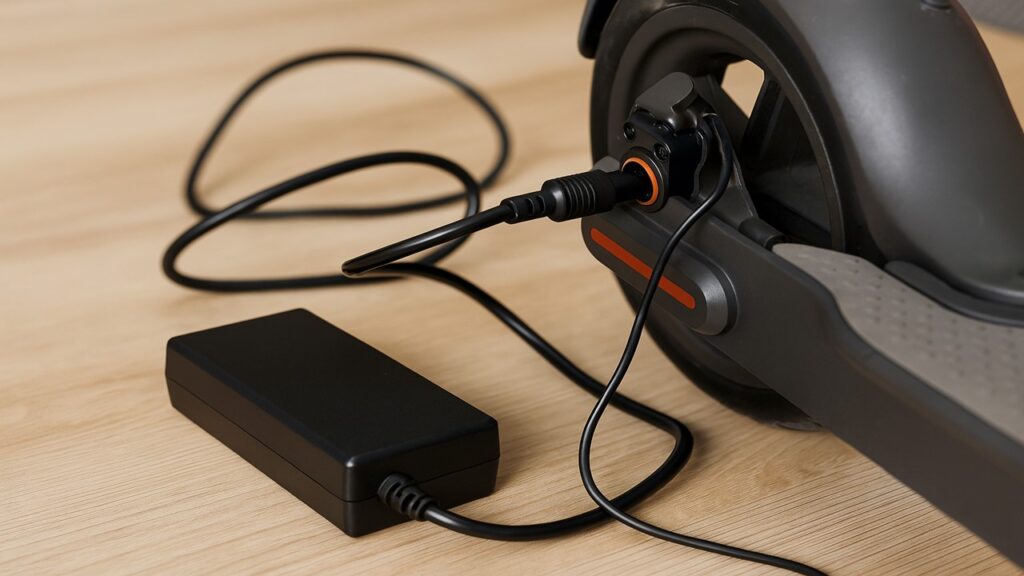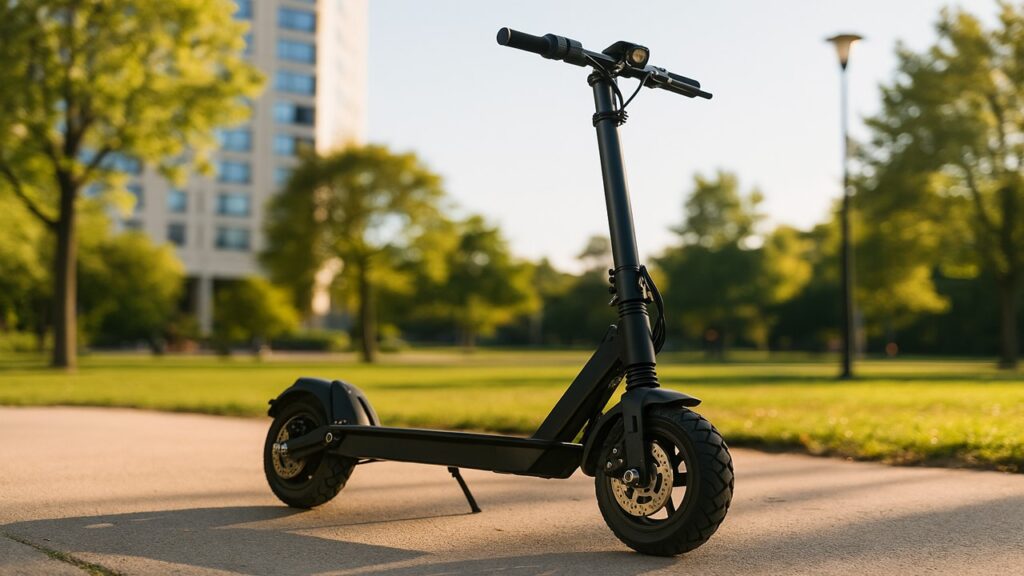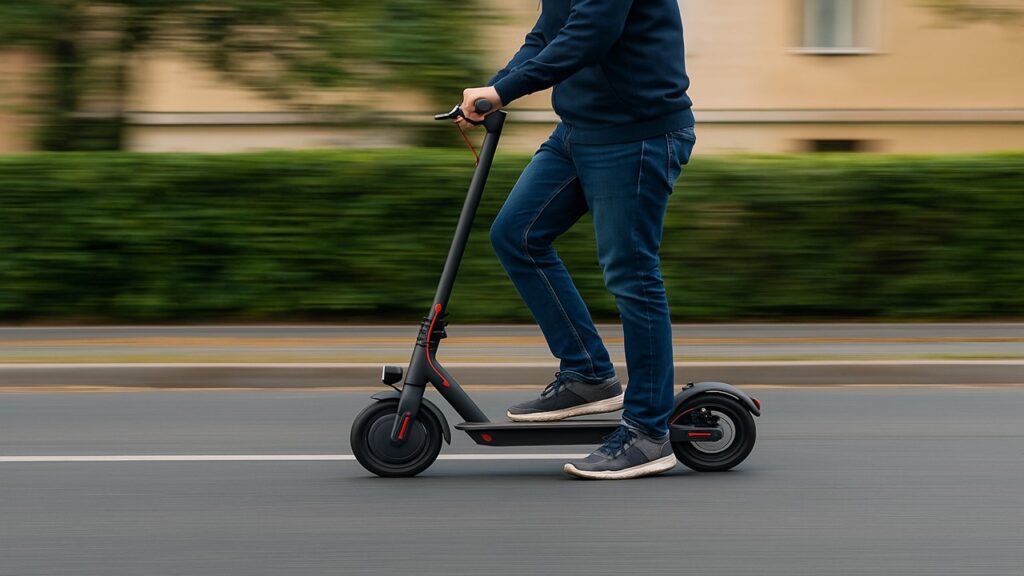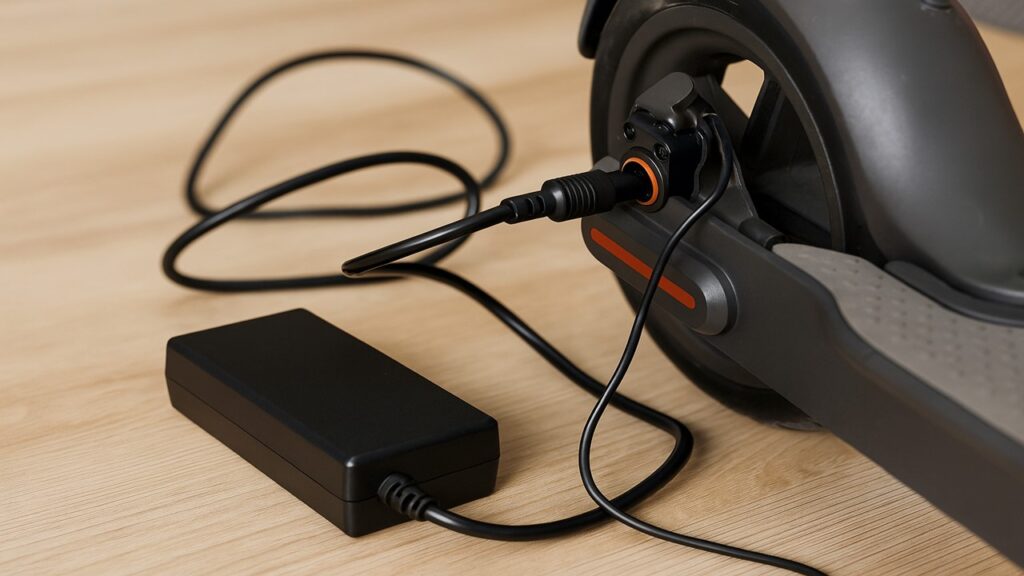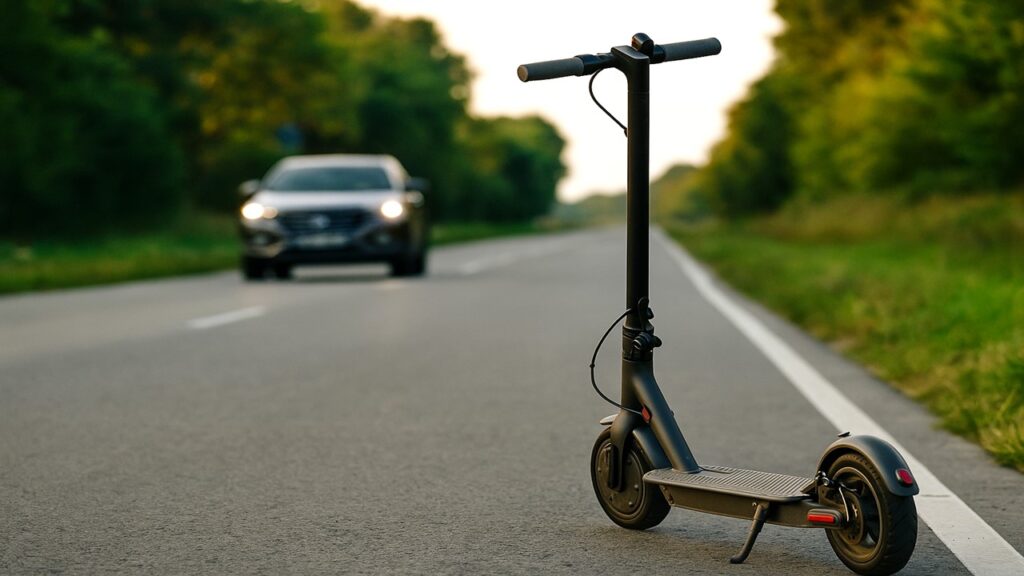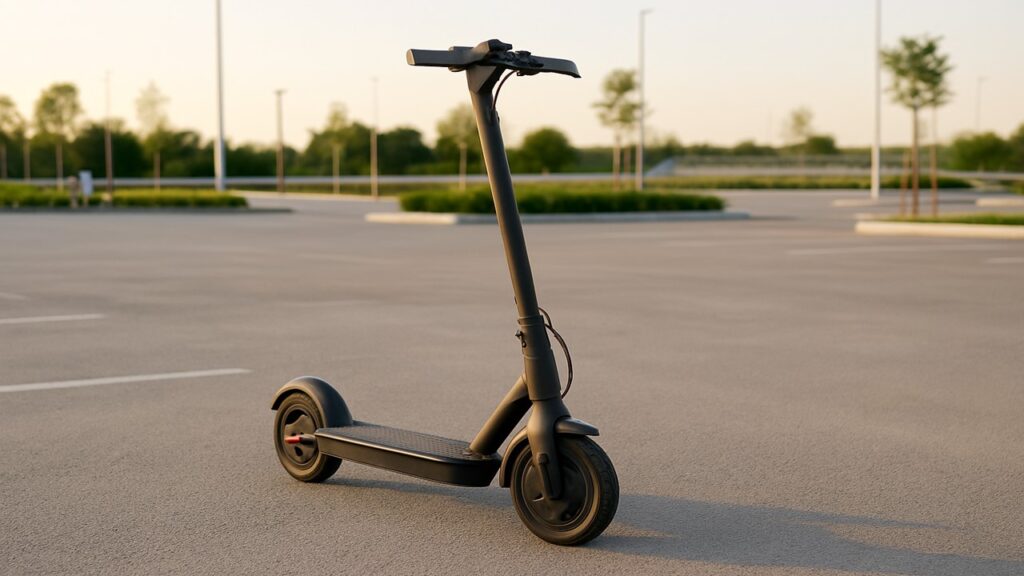
Riding an electric scooter for the first time can feel a little intimidating, but it’s actually simple once you understand the basics. With the right gear, a few safety checks, and step-by-step practice, you’ll be riding smoothly and confidently in no time.
Key Summary
- Riding an electric scooter safely starts with the basics: wear protective gear and learn the controls before moving.
- A quick pre-ride check of tires, brakes, and battery ensures your scooter is ready and prevents accidents.
- Smooth throttle control, proper stance, and gradual braking help you maintain balance and avoid common beginner mistakes.
- Practice in open spaces builds confidence, while post-ride care and knowledge of local laws keep you safe and prepared for every trip.
How to Ride an Electric Scooter for the First Time (Step-by-Step Guide)
Learning to ride starts with small, controlled steps. Here’s a quick breakdown:
- Always wear a helmet and proper safety gear.
- Learn your scooter’s throttle, brakes, and controls before moving.
- Check tires, brakes, and battery before each ride.
- Start with one foot on the deck, kick forward, then press the throttle slowly.
- Keep your knees slightly bent for balance and stability.
- Lean gently into turns and steer smoothly.
- Apply brakes gradually while shifting weight back.
Now let’s look at each step more closely.
Wear Proper Safety Gear
The most important step is protection. A certified helmet should always be your first piece of equipment. Add gloves, closed-toe shoes, and knee or elbow pads if you’re new or riding faster. Proper gear not only prevents injury but also helps you feel more secure as you ride.
Understand Your Scooter Controls
Before powering on, get familiar with the basics: throttle position, front and rear brakes, and light switches. Many scooters require a small push before the motor engages, while others start immediately. Knowing this ahead of time prevents surprises when you launch.
Do a Pre-Ride Check
A quick inspection makes every ride safer. Check that your tires are inflated, brakes respond properly, and the battery has enough charge. Lock the folding mechanism securely, and look for any loose bolts or parts. These checks take less than a minute but can prevent bigger issues on the road.
Mount and Launch Safely
Stand with your weaker foot forward and stronger foot ready to kick. Push off gently, then place your back foot on the deck and apply throttle slowly. Keep your knees bent and relaxed, as this helps absorb bumps and makes it easier to adjust your balance.
Control Speed Smoothly
New riders often over-press the throttle. Instead, apply gradual pressure and let the scooter build speed naturally. Sudden acceleration can throw off balance, while steady speed helps you focus on steering and stability.
Steer with Balance
At slow speeds, turn the handlebars slightly to guide the scooter. Once you’re moving faster, lean your body in the direction of the turn while keeping your eyes forward. Smooth movements are key — avoid sharp jerks of the handlebars.
Brake Without Losing Balance
Always press brakes gradually. Use the rear brake first, then add the front if needed. As you slow down, bend your knees and shift your weight back. This prevents tipping forward and gives you more control in sudden stops.
Choosing Your First Beginner Scooter
Your first scooter should be easy to handle and forgiving for new riders. Lightweight models with speeds capped around 15–20 mph are ideal because they balance safety with enough power to feel fun. Look for scooters with a wide deck, simple throttle control, and good stability.
Durability also matters. A strong frame, reliable brakes, and puncture-resistant tires make riding less stressful and reduce maintenance. While advanced models with high speeds might seem exciting, starting with a beginner-friendly scooter helps you build skills and confidence before upgrading.
Confidence-Building Drills for First-Time Riders
Before heading into traffic, practice in an empty parking lot or open path. Start with simple launches and stops, gradually working on smooth throttle use and steady braking. This builds muscle memory and helps you get used to how the scooter reacts.
Once you’re comfortable, try weaving around small markers or cones. These balance drills teach you how to steer precisely and shift weight naturally. Practicing in a controlled space gives you confidence that carries over when you ride on busier streets.
Common Beginner Mistakes
New riders often make the same errors. Here are the most frequent ones and how you can avoid them.
| Mistake | Why It Happens | How to Avoid It |
| Jerky throttle use | Pressing too hard, too quickly | Apply steady pressure and build speed gradually |
| Hard braking | Panic stopping with full brake pull | Squeeze brakes gently and shift weight back |
| Over-steering handlebars | Turning too sharply | Lean into turns instead of cranking handlebars |
| Riding without gear | Underestimating risks | Always wear a helmet, gloves, and proper shoes |
| Poor stance | Feet side-by-side, stiff posture | Use one foot forward stance, knees bent, body relaxed |
Learning these early helps you avoid accidents and makes your first rides smoother and safer.
Advanced Tips Once You’re Comfortable
Once you’ve mastered the basics, you can start practicing in more realistic conditions. Try riding over small bumps or cracks in the pavement by slightly lifting your weight off the deck to reduce impact. Learn how your scooter handles in different environments, such as uphill stretches, light rain, or uneven paths. This builds adaptability and prepares you for everyday commuting.
Another useful skill is energy management. Smooth throttle control, consistent speeds, and properly inflated tires all help extend your scooter’s range. If your model has riding modes, experiment with eco-mode for longer trips or switch to standard mode when you need more speed. These small adjustments make a big difference in ride quality and efficiency.
Post-Ride Care and Scooter Maintenance
A little care after each ride keeps your scooter safe and reliable. Think of it as closing routine for your trip.
- Clean the frame: Wipe down the scooter to remove dust, dirt, or moisture, especially after wet rides.
- Check the tires: Look for cuts, punctures, or low pressure. Proper inflation improves safety and range.
- Inspect the brakes: Test responsiveness so you’re ready for your next ride.
- Charge the battery properly: Avoid draining it completely; partial top-ups extend battery life.
- Store it correctly: Keep your scooter indoors, in a cool and dry space, to prevent weather damage.
These habits reduce wear, save you money on repairs, and ensure smoother rides in the future.
Know the Local Laws and Regulations
Electric scooter rules vary widely depending on your city or country. In some places, scooters are allowed in bike lanes but banned from sidewalks, while other regions have strict speed caps, helmet laws, or minimum age requirements. Understanding these details prevents fines and ensures you’re riding where it’s safe and legal.
It’s also smart to check whether your area requires registration or insurance for e-scooters. Even if it isn’t legally required, riding responsibly means following traffic signs, signaling turns, and giving pedestrians the right of way. Staying within the law not only protects you but also helps keep scooters welcome in more communities.
Final Words
Learning how to ride an electric scooter for the first time is about combining safety with practice. Start with protective gear, check your scooter before every trip, and ease into riding with controlled speed and steady balance. Once you’re comfortable, add drills, advanced techniques, and smart maintenance to extend your skills and the scooter’s life.
Whether you’re commuting, exploring, or simply enjoying the ride, these steps will help you stay safe, confident, and ready for the road ahead.
FAQs
How long does it take to learn to ride an electric scooter?
Most beginners feel comfortable after one or two practice sessions, though mastering balance and braking may take a little longer.
Can you ride an electric scooter on sidewalks?
This depends on local laws. Some areas allow it, while others restrict scooters to bike lanes or roads. Always check your city’s rules before riding.
Do you need a license for an electric scooter?
In many regions, no license is required, but some states or countries do have age or licensing rules. Verify the regulations where you plan to ride.

Max Volt is an electric scooter and e-bike enthusiast who rides daily and knows the nuts and bolts of every model. With years of hands-on repair experience and real-world testing, Max shares practical reviews, maintenance tips, and buyer guides to help riders choose the right gear with confidence. His mission is to make electric commuting safer, smarter, and more enjoyable for everyone.




